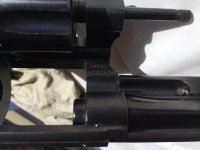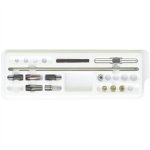Jack Flash
Member
I'm grabbing at straws here:
1. Maybe the bevel sped up assembly slightly? I have never joined a barrel to a frame but it looks like a pretty tight fit. Maybe a the bevel made starting it easier?
2. The bevel would help the revolver continue to function despite heavy powder fouling on the front of the cylinder?
I admit the above are pretty far-fetched. Someone else?
1. Maybe the bevel sped up assembly slightly? I have never joined a barrel to a frame but it looks like a pretty tight fit. Maybe a the bevel made starting it easier?
2. The bevel would help the revolver continue to function despite heavy powder fouling on the front of the cylinder?
I admit the above are pretty far-fetched. Someone else?




